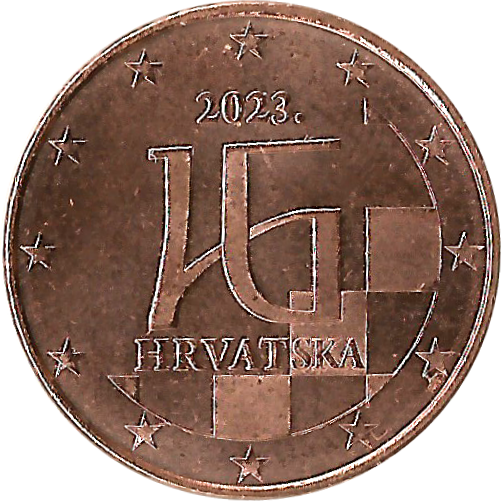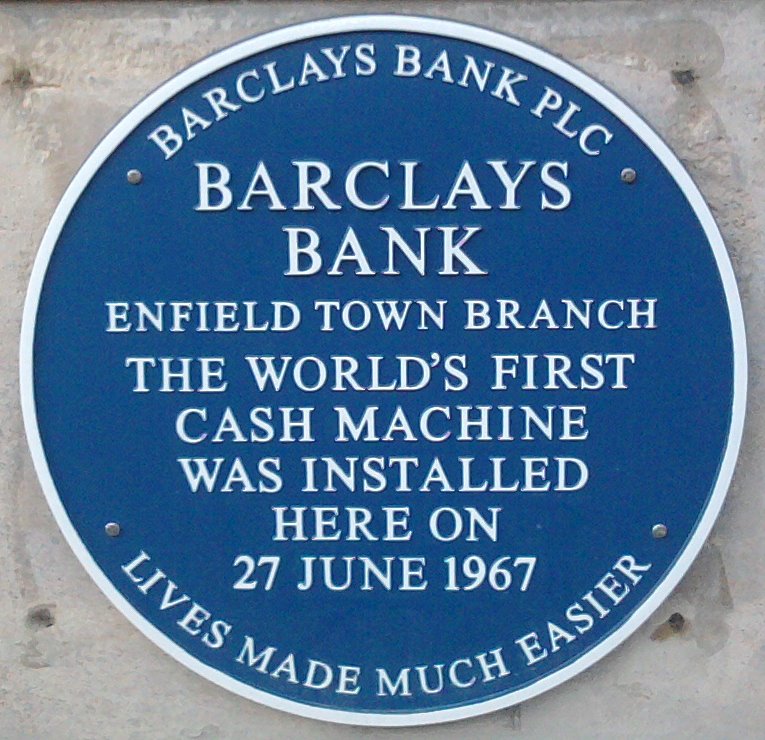|
Croatian Euro Coins
The Croatian euro coins are a set of euro coins currently being minted by the Croatian Mint since July 2022. They are the official euro coins with the national motif of Croatia. The euro was introduced as a replacement for the Croatian kuna on 1 January 2023. The kuna and the euro were in dual circulation until 14 January 2023 in order to aid the gradual transition to the euro. Prices are displayed in both currencies since 5 September 2022, continued to be until 31 December 2023. The euro coins were made available for purchase on 1 December 2022. Each package cost 100 kunas (13.28 euros). Remaining kuna coins can be exchanged in all banks, Croatian Post offices and the Croatian Financial Agency (Fina) until 31 December 2023. After that period only the Croatian National Bank (HNB) will handle the exchanges. Kuna banknotes can be exchanged indefinitely, while kuna coins can be exchanged until 31 December 2025. As of October 2022, there were approximately 420 million euro coins mi ... [...More Info...] [...Related Items...] OR: [Wikipedia] [Google] [Baidu] [Amazon] |
Euro Coins
There are eight euro coin denominations, ranging from one cent to two euro (the euro is divided into a hundred cents). The coins first came into use in 2002. They have a common Obverse and reverse, reverse, portraying a map of Europe, but each country in the eurozone has its own design on the Obverse and reverse, obverse, which means that each coin has a variety of different designs in circulation at once. Four European microstates that are not members of the European Union (Andorra, Monaco, San Marino, and Vatican City) use the euro as their currency and also have the right to mint coins with their own designs on the obverse side. The coins, and various €2 commemorative coins, commemorative coins, are minted at numerous national mints across the eurozone to strict national quotas. Not every eurozone member state has its own mint. Obverse designs are chosen nationally, while the reverse and the currency as a whole is managed by the European Central Bank (ECB). History The e ... [...More Info...] [...Related Items...] OR: [Wikipedia] [Google] [Baidu] [Amazon] |
Croatian Language
Croatian (; ) is the standard language, standardised Variety (linguistics)#Standard varieties, variety of the Serbo-Croatian pluricentric language mainly used by Croats. It is the national official language and literary standard of Croatia, one of the official languages of Bosnia and Herzegovina, Montenegro, the Serbian province of Vojvodina, the European Union and a recognized minority language elsewhere in Serbia and other neighbouring countries. In the mid-18th century, the first attempts to provide a Croatian literary standard began on the basis of the Neo-Shtokavian dialect that served as a supraregional lingua franca – pushing back regional Chakavian, Kajkavian, and Shtokavian vernaculars. The decisive role was played by Croatian Vukovians, who cemented the usage of Ijekavian Neo-Shtokavian as the literary standard in the late 19th and the beginning of the 20th century, in addition to designing a phonological orthography. Croatian is written in Gaj's Latin alphabet. B ... [...More Info...] [...Related Items...] OR: [Wikipedia] [Google] [Baidu] [Amazon] |
Marten
A marten is a weasel-like mammal in the genus ''Martes'' within the subfamily Guloninae, in the family Mustelidae. They have bushy tails and large paws with partially retractile claws. The fur varies from yellowish to dark brown, depending on the species; it is valued by animal trappers for the fur trade. Martens are slender, agile animals, which are adapted to living in the taiga, and inhabit coniferous and northern deciduous forests across the Northern Hemisphere. Classification Results of DNA research indicate that the genus ''Martes'' is paraphyletic, with some studies placing ''Martes americana'' outside the genus and allying it with '' Eira'' and '' Gulo'', to form a new New World clade. The genus first evolved up to seven million years ago during the Miocene epoch. Fossils Several fossil martens have been described, including: *†''Martes campestris'' (Pliocene) *†''Martes wenzensis'' (Pliocene) *†''Martes vetus'' (Pleistocene) Another descri ... [...More Info...] [...Related Items...] OR: [Wikipedia] [Google] [Baidu] [Amazon] |
Eurozone
The euro area, commonly called the eurozone (EZ), is a Monetary union, currency union of 20 Member state of the European Union, member states of the European Union (EU) that have adopted the euro (Euro sign, €) as their primary currency and sole legal tender, and have thus fully implemented Economic and Monetary Union of the European Union, EMU policies. The 20 eurozone members are: : Austria, Belgium, Croatia, Cyprus, Estonia, Finland, France, Germany, Greece, Ireland, Italy, Latvia, Lithuania, Luxembourg, Malta, the Netherlands, Portugal, Slovakia, Slovenia, and Spain. The seven non-eurozone members of the EU are Bulgaria, the Czech Republic, Denmark, Hungary, Poland, Romania, and Sweden. They continue to use their own national currencies, although all but Denmark are obliged to join once they meet the euro convergence criteria. Bulgaria is targeting to join the eurozone on 1 January 2026. Bulgaria is expected to become the 21st eurozone member from January 1, 2026. ... [...More Info...] [...Related Items...] OR: [Wikipedia] [Google] [Baidu] [Amazon] |
Automated Teller Machine
An automated teller machine (ATM) is an electronic telecommunications device that enables customers of financial institutions to perform financial transactions, such as cash withdrawals, deposits, funds transfers, balance inquiries or account information inquiries, at any time and without the need for direct interaction with bank staff. ATMs are known by a variety of other names, including automatic teller machines (ATMs) in the United States (sometimes RAS syndrome, redundantly as "ATM machine"). In Canada, the term automated banking machine (ABM) is also used, although ATM is also very commonly used in Canada, with many Canadian organizations using ATM rather than ABM. In British English, the terms cashpoint, cash machine and hole in the wall are also used. ATMs that are Independent ATM deployer, not operated by a financial institution are known as "White-label ABMs, white-label" ATMs. Using an ATM, customers can access their bank deposit or credit accounts in order to make ... [...More Info...] [...Related Items...] OR: [Wikipedia] [Google] [Baidu] [Amazon] |
European Central Bank
The European Central Bank (ECB) is the central component of the Eurosystem and the European System of Central Banks (ESCB) as well as one of seven institutions of the European Union. It is one of the world's Big Four (banking)#International use, most important central banks with a balance sheet total of around 7 trillion. The Governing Council of the European Central Bank, ECB Governing Council makes monetary policy for the Eurozone and the European Union, administers the foreign exchange reserves of EU member states, engages in foreign exchange operations, and defines the intermediate monetary objectives and key interest rate of the EU. The Executive Board of the European Central Bank, ECB Executive Board enforces the policies and decisions of the Governing Council, and may direct the national central banks when doing so. The ECB has the exclusive right to authorise the issuance of euro banknotes. Member states can issue euro coins, but the volume must be approved by the EC ... [...More Info...] [...Related Items...] OR: [Wikipedia] [Google] [Baidu] [Amazon] |
Council Of The European Union
The Council of the European Union, often referred to in the treaties and other official documents simply as the Council, and less formally known as the Council of Ministers, is the third of the seven institutions of the European Union (EU) as listed in the Treaty on European Union. It is one of two legislative bodies and together with the European Parliament serves to amend and approve, or veto, the proposals of the European Commission, which holds the right of initiative. The Council of the European Union and the European Council are the only EU institutions that are explicitly intergovernmental, that is, forums whose attendees express and represent the position of their Member State's executive, be they ambassadors, ministers or heads of state/government. The Council meets in 10 different configurations of national ministers (one per state). The precise membership of these configurations varies according to the topic under consideration; for example, when discussin ... [...More Info...] [...Related Items...] OR: [Wikipedia] [Google] [Baidu] [Amazon] |




